Time to get saucy with three sauces that are great additions to family meals, breakfast, lunch or supper! It’s way to easy to fall into a repetitive cycle when cooking family meals daily, and to be locked in a rotation of the same dishes, rather than daring new textures, flavors or combinations.
A good way to reinvent meals and experiment with flavors is to become a saucier or sauce-master!
Today we propose three easy sauces, one of which is vegan and gluten-free!
In terms of utensils, you will need a spatula, a whisk, a knife, a cutting board, a blender and a pan for each sauce.
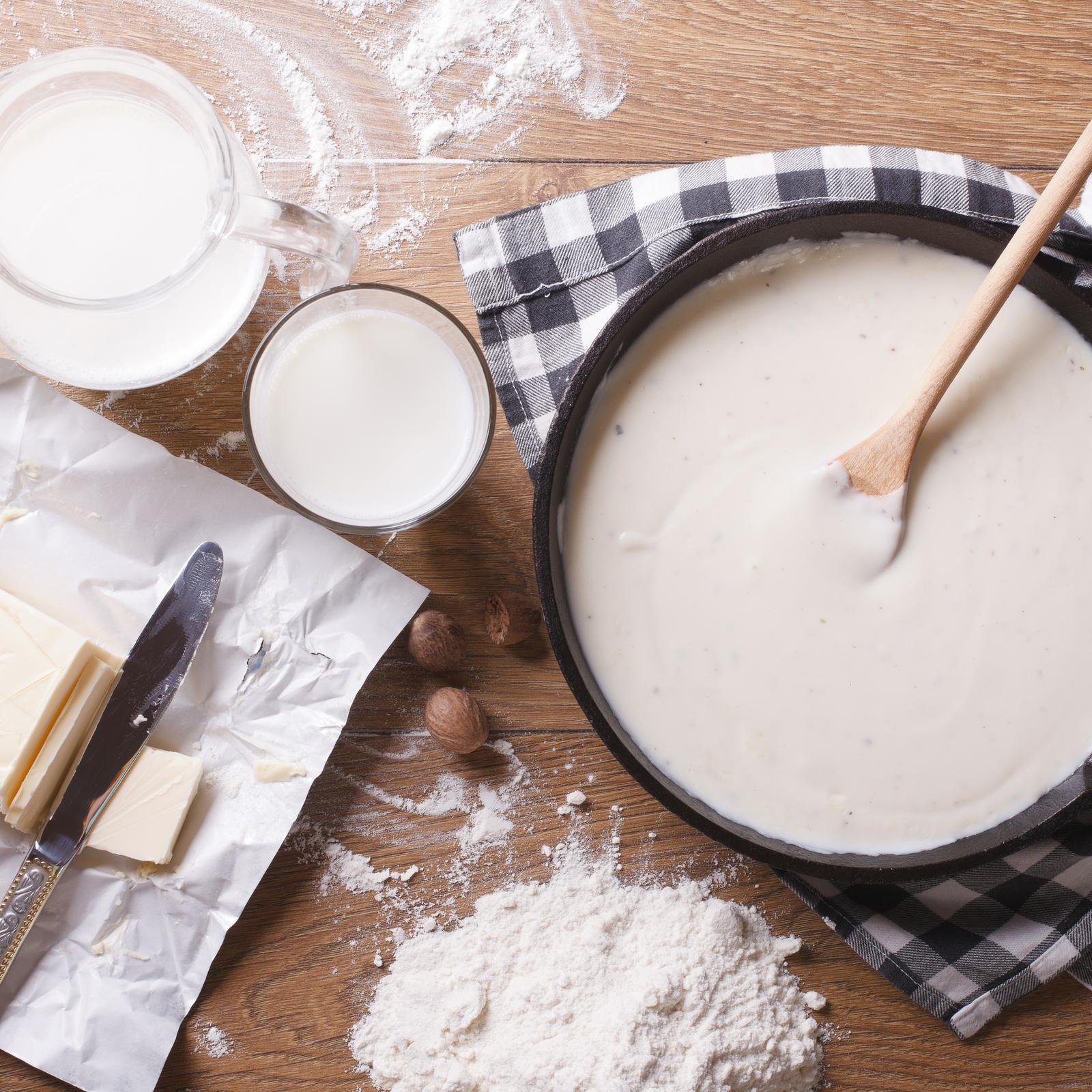
Béchamel Sauce
Here are the ingredients for your Béchamel Sauce:
- 1 medium onion, finely chopped
- 2 to 4 cups of milk (it is good to have more on hand in case the sauce becomes too thick)
- 3 tablespoons of butter
- 3 tablespoons of flour
- a pinch of nutmeg (the flavor is far superior if you buy the whole nuts and grind them yourself)
- a pinch of pepper
- ¾ teaspoon of salt (if your butter is unsalted)
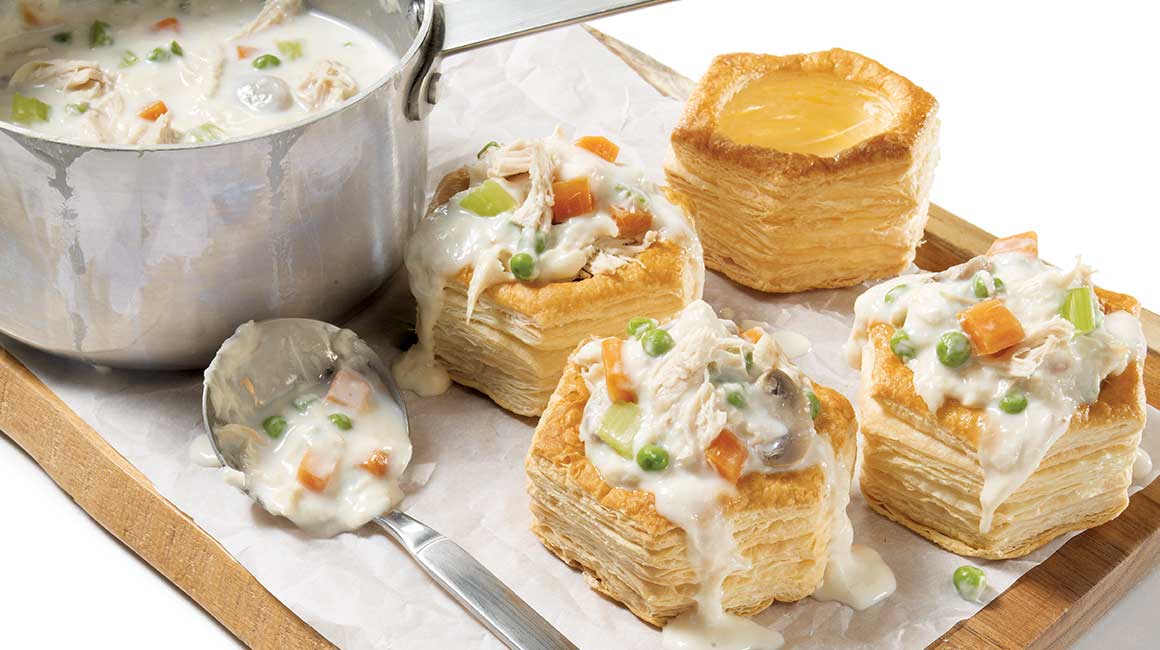
Start by melting the butter over medium heat in a pan, add the finely chopped onion and sauté until it is tender and translucent. Add the flour to the butter and onions and start stirring.
Then cook the mixture of butter, flour and onions for a few minutes while stirring. This ensures that the sauce will not taste like flour, it must cook before adding the milk. This step is called making a roux. The roux will serve to thicken the milk and make a nice, smooth sauce.
Finally, add the milk and a pinch of nutmeg, whisking constantly with the whisk. Keep a medium-high heat. Bubbles will form in the sauce, but be careful, if you stop whisking, your sauce will have chunks!
When the consistency of the sauce becomes thick and creamy, remove the pan from the heat and add the salt and pepper. It’s ready!
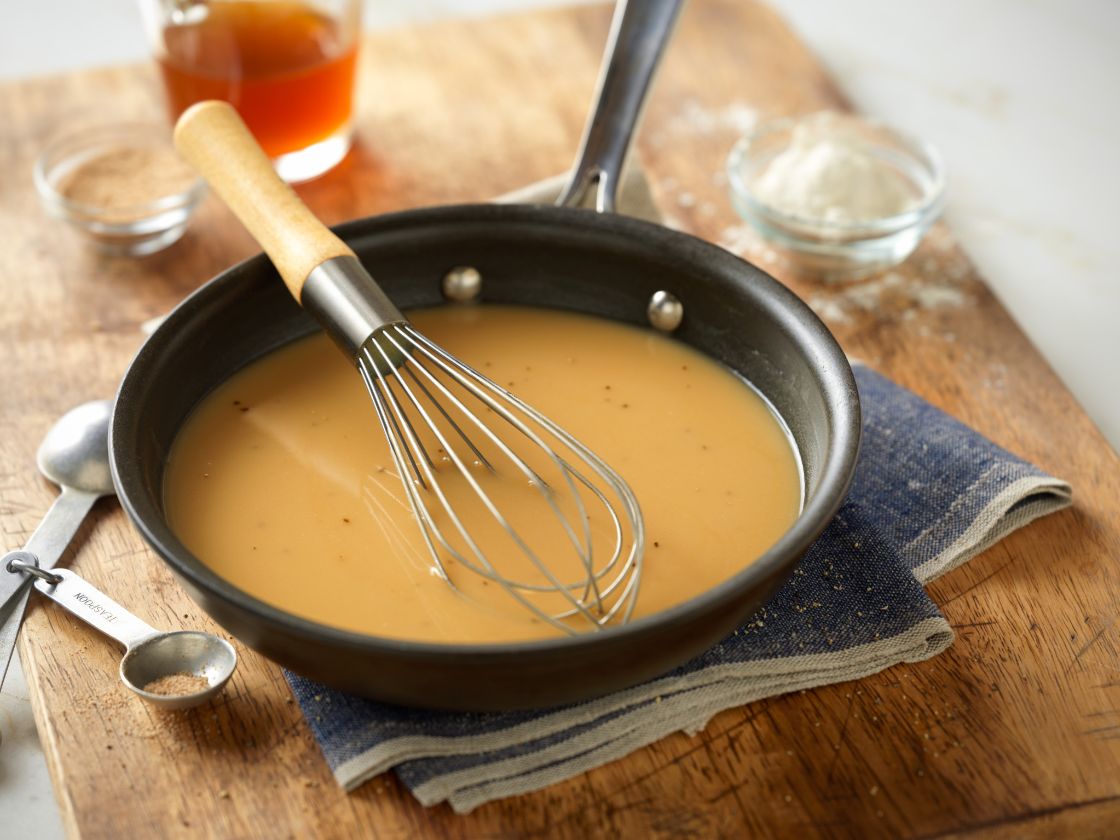
Gravy
Here are the ingredients for your Gravy:
- 1 medium onion, finely chopped
- 2 to 4 cups of beef broth (it is good to have more on hand in case the sauce becomes too thick)
- 3 tablespoons of butter
- 3 tablespoons of flour
- a pinch of Thym
- a pinch of pepper
- ¾ teaspoon of salt (if your butter and broth are unsalted)
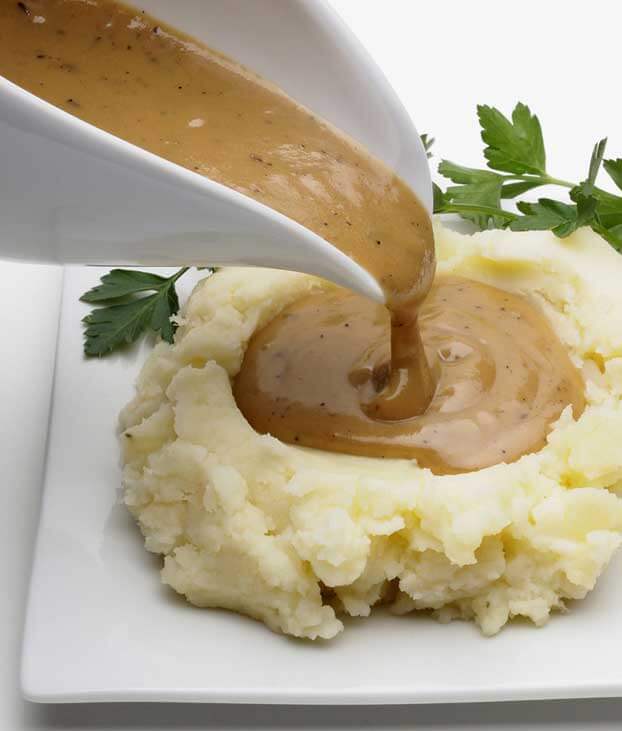
For the Gravy, you essentially repeat all the same steps as the béchamel sauce, but the broth replaces the milk and the thyme replaces the nutmeg.
In both cases (Béchamel and Gravy), if the family is not ready to sit down at the table at the perfect time, or if the sauce thickens too quickly, you can add milk or broth and continue to stir to keep it in its optimal state!
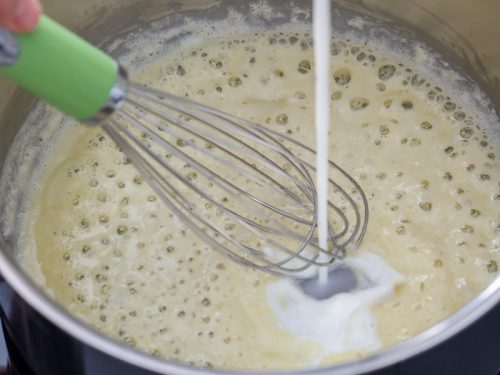
Cashew sauce
Here are the ingredients for the Vegan and Gluten-free Cashew Sauce:
- 3 ¼ cups unsalted cashews
- 3 cups of water
- 3 tablespoons of Corn Starch (or, a healthier option is arrow-root or tapioca flour)
- 3 tablespoons of cooking oil
- 3 teaspoons of onion powder
- ¾ teaspoon of salt
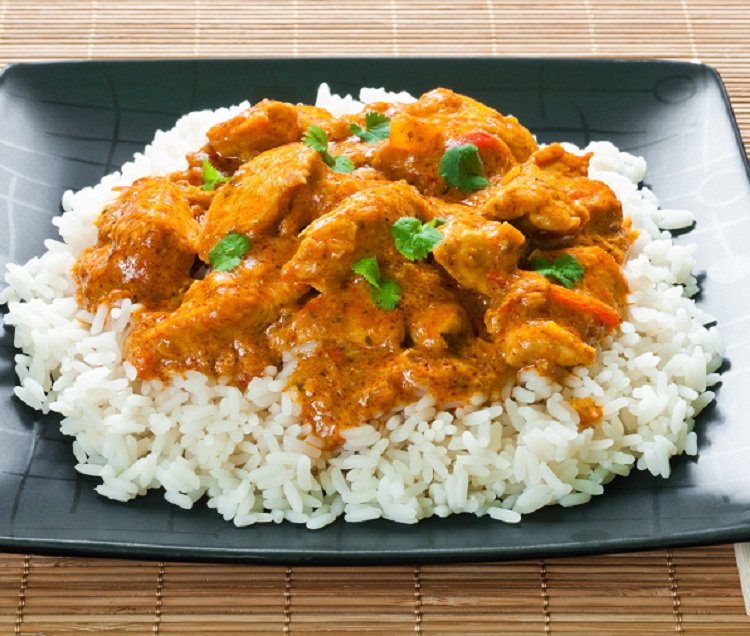
The cashew sauce is the easiest of all three! You simply put all of the ingredients in the blender and then whisk the mixture in a pan over low heat 3-5 minutes or until it thickens!
This sauce is also very versatile, because it can easily replace a gravy served with mashed potatoes for example, or a Béchamel Sauce atop a filet of Salmon!
By replacing the salt with soy sauce, you can even give it a darker brown color and a saltier taste resembling Gravy. But by adding nutmeg, it is a perfect substitute for Béchamel Sauce!
Do it your way!
They say the appetite is sharpened by the first bites! We are sure you will enjoy combining sauces with your favorite dishes and that the kids will be proud to call themselves saucier ! This way they can always have their special role in the kitchen for many meals to come!
Here a few dish ideas :
Béchamel Sauce can be integrated into any dish that you want to brown in the oven (with cheese) such as lasagna or pasta, soufflés, moussaka, pizzas etc. It also stands very well on its own over dumplings, fish, chicken, asparagus or even broccoli.
Gravy is often served with meat dishes such as roast beef, steak, chicken, pork chops or meatballs. But some would say that its application of choice is with potatoes (especially mashed or fried) Let us not speak of or even mention poutine…or we would be speaking moistly.
Cashew sauce (as mentioned in the article) can serve as a substitute for the two previous sauces!
Diary
It’s time to take out your logbook! We invite you to describe your family cooking activity. The description can be in the form of a drawing, a collage, a cartoon, or even a poem!
Keep some space to write questions related to the activity of the day. These questions are for your children and are intended to motivate an interesting conversation around the activity.
- Which sauce did you prefer?
- Can you imagine other combinations of spices that could be incorporated into different sauces?
- What do you think about adding textures to our sauces? For example, mushrooms or small pieces of beef (leftover roast or steak) in the Gravy?
Did you know…
- … that there two methods that are commonly used to make sauces? The first being a “Roux”. A Roux as we have seen with the Gravy and béchamel sauces, is a dough that is formed by baking flour in fat, like butter. The second method is to thicken the sauce using starch, as we have seen with Cashew Sauce. Cornstarch is popular, but other forms of starch are even more nutritious, such as arrowroot, tapioca, potato or rice flour. These starch sources form a thickening jelly when mixed with cold or cool liquid. Once well mixed, you can add them to a broth or milk and stir over low heat to thicken your sauces.
- … that at the start of the 17th century Béchamel first emerged as a royal sauce? The inventor of this sauce is Louis de Béchameil. A famer by trade he was hired as a butler to King Louis XIV. His knowledge of the culinary arts combined with the task of serving a king with an ogre’s appetite, made him quickly consider a new type of sauce!
- … that even though several cultures serve Gravy to accompany their dishes, it is said that its origin is French? Even the English term for Gravy is a derivative of “Gravé” from French. The word can be found in many medieval French cookbooks. The original meaning was precise: the “Gravé” consisted of natural cooking juices from roasting meat. With the revival of sauce making in 17th century France, Gravy has undergone many refinements with the addition of herbs, wine and other highly flavored ingredients.
Furthermore, you could vary the spices or you could choose to substitute the beef broth in the brown sauce for chicken or mushroom broth.
You could also decide to omit the nutmeg from the béchamel sauce, and add fresh chopped tomatoes and fresh basil, then you will have an delicious Alfredo sauce with tomatoes and basil!
Be creative and discover the world of sauces!
Activity by M. Coco





